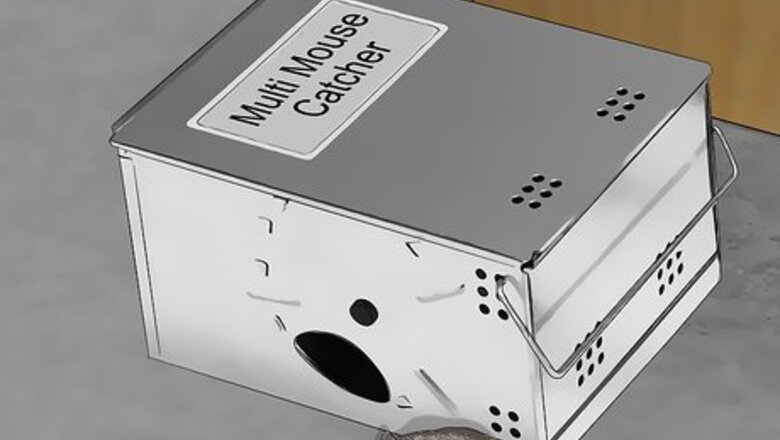
views
Setting Traps

Use catch and release traps for the most humane method. Place the bait provided with the trap on the inside compartment. Lift the front opening of the trap so the mouse can get inside. Once the mouse is in the trap, its weight will cause the opening to close and trap the mouse inside until you release it outside away from your home. Catch and release traps can be purchased in store or online. If you have a larger mouse problem, purchase a catch and release trap meant for multiple mice. Read the instructions on the trap carefully since they may require different setups.
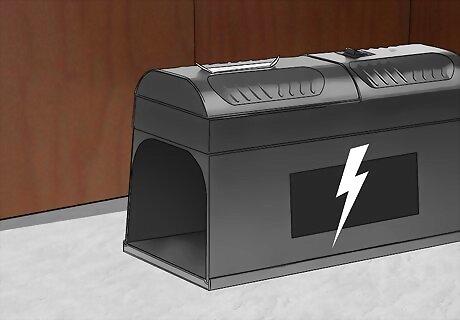
Purchase electrocution traps to effectively kill the mice. Put batteries inside the trap to power it. Put a bait inside the trap near the holes so mice can smell it from the outside. Set the trap near an area where you notice mice. Once the mice enter the trap, they receive a shock that kills them instantaneously. Set the trap so the entrance is near a wall since mice tend to run near the corners.
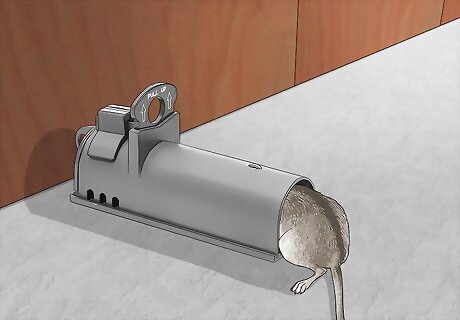
Leave “no touch, no see” snap traps in problem areas to get rid of mice easily. An updated version of the classic snap trap, “no touch, no see” traps make it so you don't have to handle the dead mouse. Set the lever down on the trap and place a small amount of bait inside. When the lever is back up, a mouse has triggered it. Simply depress the lever again to drop the mouse in the trash. Unlike classic snap traps, “no touch, no see” mouse traps are safe around kids and pets.
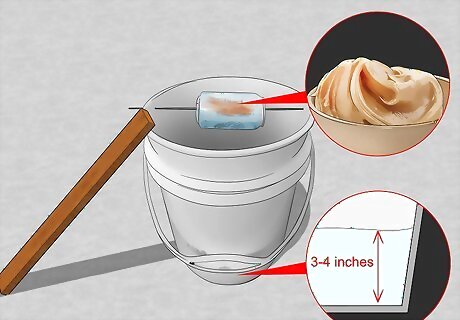
Set a bucket trap with water if you're away from the infestation. Put 3–4 in (7.6–10.2 cm) of water in the bottom of a 5 US gal (19 L). Set one end of a wooden plank on the ground and the other on the edge of the bucket. Attach an old soda can to a wooden or metal dowel on top of the bucket and coat the can with a thin layer of peanut butter. Mice will walk up the ramp towards the peanut butter, but fall and get trapped in the bucket. Fill the bottom of the bucket with antifreeze if you don't want to have an odor problem, but keep it away from pets and children since antifreeze is poisonous.
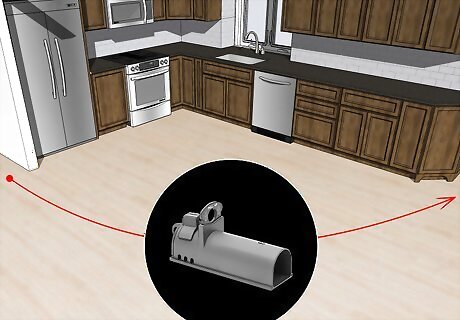
Rotate the location of the traps every 2-3 days. Check for mice twice daily to see if you've trapped any. If not, move the trap to another place around your home where you notice or think mice have been active. Mice will often return to the same trails. Mice only travel between 20–30 feet (6.1–9.1 m) from their nest every night.
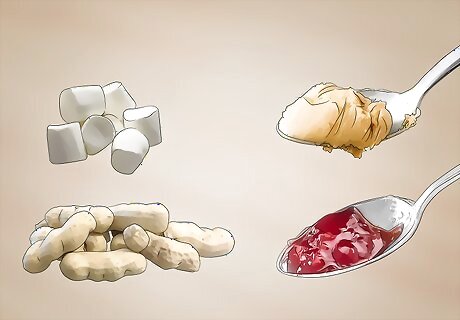
Experiment with different types of baits. Although cheese may seem like a classic way to catch mice, try other food sources such as peanut butter or nuts. Some mice will even eat sweets like marshmallows or gumdrops. Check on what types of bait work best on the mice in your home and try something new if what you use currently isn't working. Try jellies, jams, and other fruit products to give the mice a sweet meal.
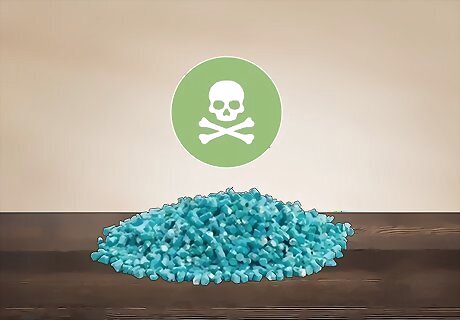
Use mouse poison as a last resort. Purchase poison bait from your local store and place it in areas where mice are a common problem. Once the mice eat the poison, they will slowly die and won't be a problem any longer. Keep the bait away from children or pets since it could also cause them harm. Some poison bait traps also capture the mice so they don't go anywhere else in your home.
Deterring Mice from Your Home
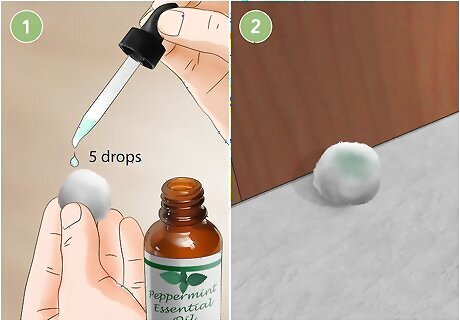
Put cotton balls covered in peppermint oil near problem areas. Put at least 5 drops of the peppermint oil on each cotton ball. Place the cotton balls around your kitchen or near any entrances. After a few days, put a few more drops on the cotton balls since the oil will evaporate over time. Try different types of strong-scented essential oils to see if they deter mice.

Plug in an ultrasonic pest repeller to keep mice from entering. Place the repeller near an entry point or common problem area. The repeller will make a noise you can't hear that keeps mice away. Make sure nothing blocks the repeller, or else the ultrasonic waves will not work. Ultrasonic repellers can be purchased in big box stores or online. Mice can grow accustomed to the noise that the repellers make, so they may only work for a limited time.
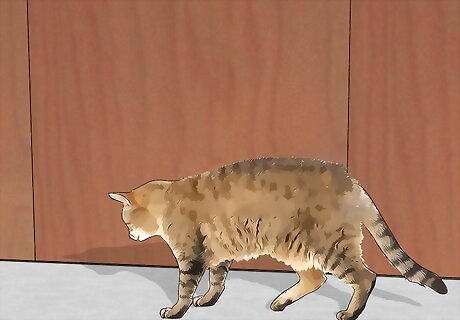
Get a cat to hunt mice around your home. Mice can sense when cats are around your home and will steer clear once they smell them on the premises. If mice do show up on your premises, your cat will hunt and kill them quickly. Remove any poison bait or exposed traps from your home if you bring in a cat.

Make a deterrent spray with chopped garlic and water. Chop 1 or 2 cloves of garlic and mix it with at least 1 cup (240 ml) of warm water. Shake the mixture in a spray bottle and spray near areas or trails where mice frequently travel. Reapply the spray every few days to keep mice away. Try other strong-smelling herbs and spices, like onion and cayenne pepper. Alternatively, leave a clove of garlic in places where mice enter your home.

Hire an exterminator if nothing else works. Call your local exterminators to get quotes on their rates. Once an exterminator checks your home, they will do what they can to seal any entrances where mice get in and remove the mice already in your home. Check reviews online for your exterminator to see how they handled other's infestations.
Keeping Mice Out
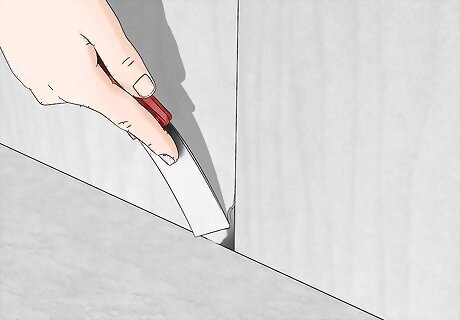
Find and fill common entry points. Look for any cracks or holes in your wall or near the floor of your home. Try to seal them permanently if you can using caulk or concrete. In a pinch, stuff the holes with steel wool, since mice can't chew through it easily. Keep the grass around your home trimmed low so you can find any points of entry. Clean up any clutter around your home since these could serve as hiding places for the mice.
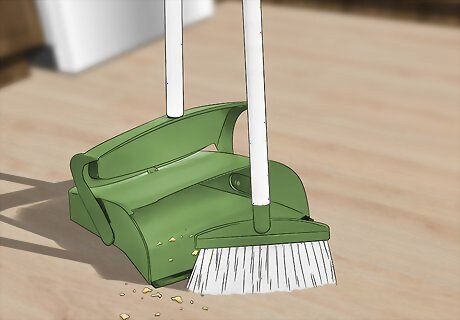
Keep your home clean so mice can't find food. After making or eating a meal, wipe up and get rid of any spills or crumbs. Avoid leaving dishes in the sink overnight since mice could look for small scraps. While cleaning your house daily won't stop mice entirely, it will help keep them away. Sweep your floors after each time you cook to collect stray crumbs.

Don't leave any food on your countertops. Put all your food away either in a cabinet or the fridge so mice don't have easy access to it. If you have mice in your home, putting away your food will drive them towards any bait or traps you left out for them. If you need to leave food out, make sure it is wrapped up or sealed.
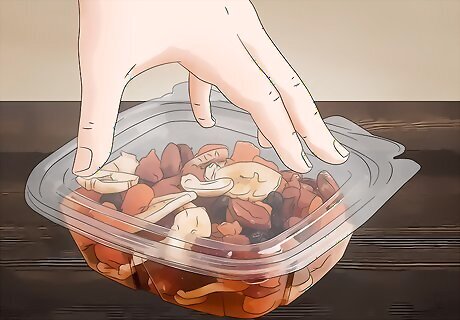
Seal food in airtight containers. Mice have a strong sense of smell, so if they can't smell any food, they won't have a reason to stay. Wrap all of your food or keep them in plastic or glass containers with lids. Transfer any boxed snacks or cereals to resealable containers if you notice mice have gotten into any of your food.




















Comments
0 comment